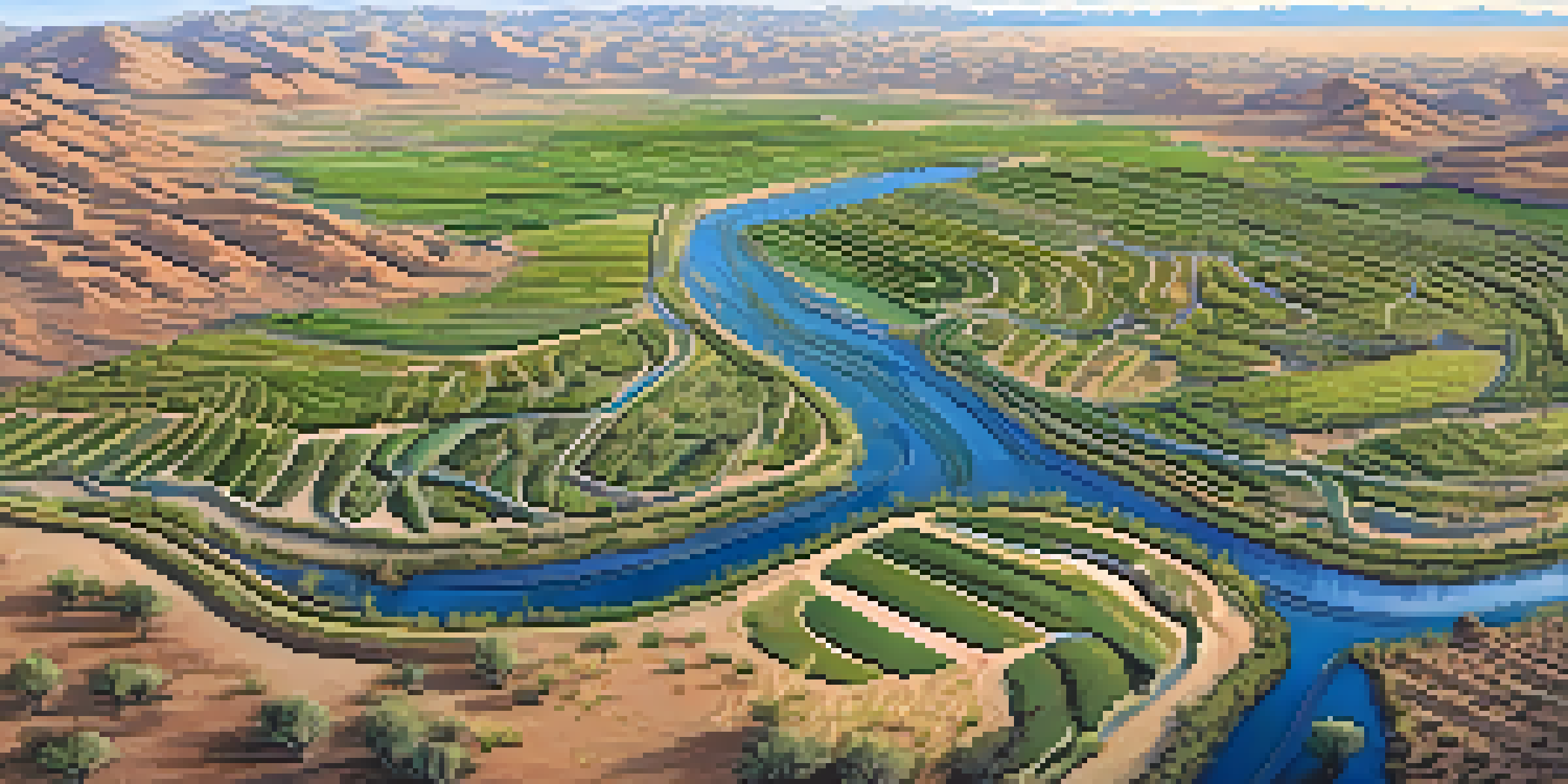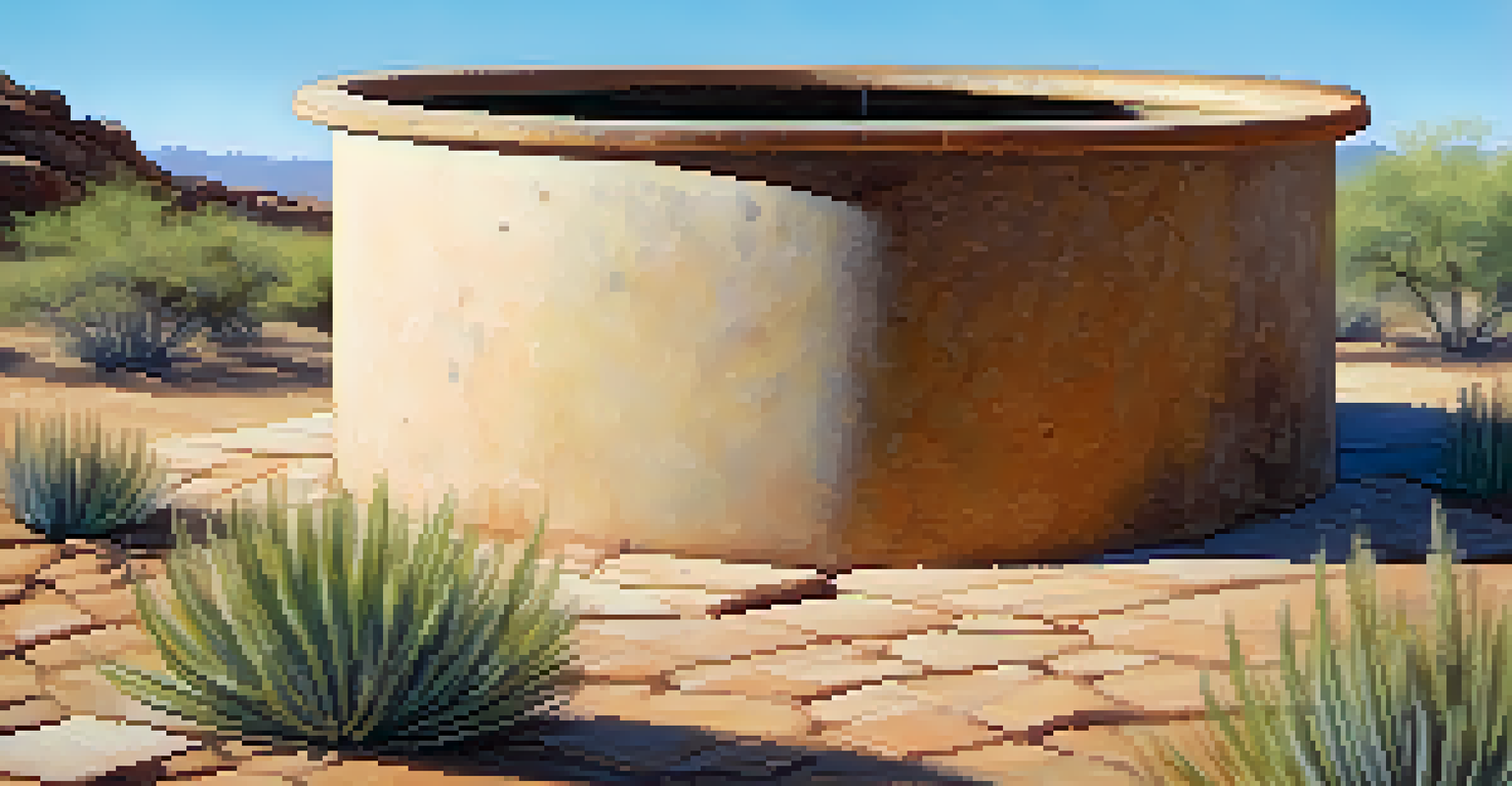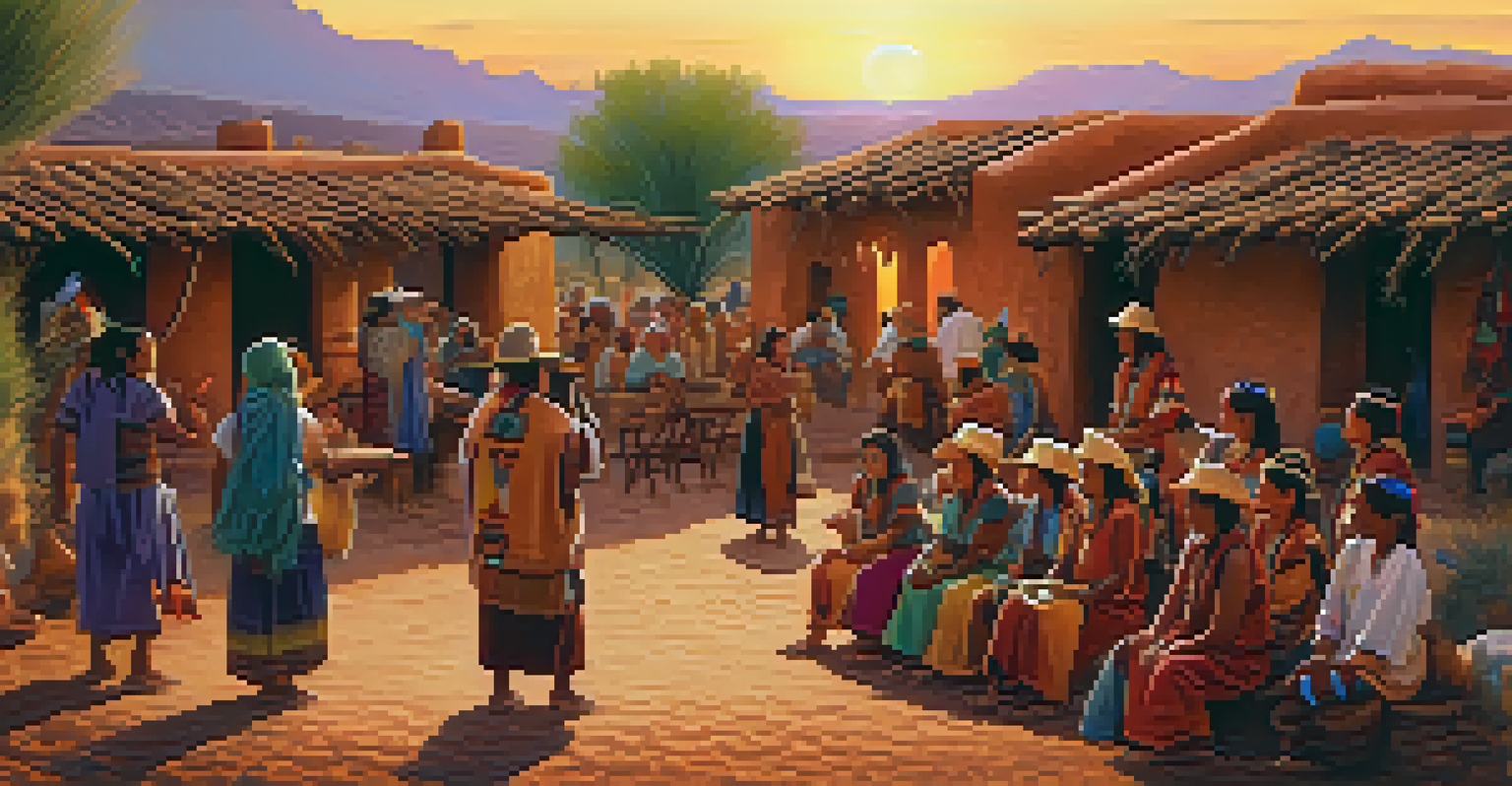Exploring Tucson's Ancient Water Harvesting Techniques

Understanding the Importance of Water in Desert Landscapes
Water is a precious resource in desert environments, and Tucson, Arizona, is no exception. The ancient inhabitants of this region, including the Hohokam, developed ingenious methods to harness water for agriculture and daily life. Their techniques reflected a deep understanding of the local ecosystem, allowing them to thrive in arid conditions.
Water is the driving force of all nature.
Imagine living in a place where rain is scarce, yet your community flourishes. This was the reality for the Hohokam, who relied on the seasonal floods of nearby rivers to irrigate their crops. By developing a system of canals and water channels, they created a sustainable way to farm amidst the harsh desert climate.
Today, we can learn valuable lessons from these ancient practices. As we face increasing challenges related to water scarcity and climate change, revisiting these techniques offers insights into sustainable living in arid regions.
The Hohokam: Masters of Water Management
The Hohokam civilization, which thrived from around 300 AD to 1500 AD, was a pioneer in water management. They constructed an extensive canal system that spanned over 500 miles, showcasing their ability to engineer solutions for irrigation. This intricate network not only supported their agricultural needs but also connected communities, fostering trade and social interaction.

Think of the Hohokam’s canals as the veins of their civilization, transporting life-sustaining water across the landscape. By carefully planning these waterways, they could redirect water to areas that needed it most, ensuring that their crops received adequate hydration. This careful management allowed them to cultivate crops such as maize, beans, and squash, which were staples in their diet.
Hohokam's Innovative Water Management
The Hohokam civilization developed advanced irrigation techniques, including extensive canal systems, to thrive in desert conditions.
The legacy of the Hohokam’s water management techniques can still be seen today in modern irrigation practices. Their innovative spirit serves as an inspiration for current efforts to adapt to environmental challenges.
The Role of Rainwater Harvesting Techniques
Rainwater harvesting was another vital aspect of ancient water management in Tucson. With sporadic rainfall, capturing and storing rainwater allowed communities to supplement their water supply. The Hohokam used various methods, including catchment basins and simple cisterns, to ensure they could make the most of every drop.
In every drop of water, there is a story of life.
Imagine a time when every rainstorm felt like a gift from the sky. For the Hohokam, every rainfall was an opportunity to gather water and support their crops. By using natural topography to direct rainwater into storage areas, they maximized their resources and reduced waste.
Today, rainwater harvesting is gaining popularity once again, as people seek sustainable solutions for water conservation. By studying how ancient civilizations approached this challenge, we can develop modern systems that honor their wisdom and adapt to our needs.
Constructing Check Dams for Water Retention
Check dams were another innovative technique employed by the Hohokam to manage water flow and enhance retention. These small barriers were built in washes and drainage areas to slow down the movement of water, allowing it to seep into the ground and recharge the aquifer. This method not only helped in water conservation but also prevented soil erosion.
Visualize a gentle stream interrupted by a series of small barriers, creating pools of water that nourish the land. This is the essence of a check dam, a simple yet effective solution to harness the power of nature. By strategically placing these structures, the Hohokam could extend the availability of water during dry spells.
Cultural Significance of Water
Water harvesting practices were deeply intertwined with the Hohokam's spirituality and community identity, reflecting its vital role in their culture.
In contemporary times, check dams are being reintroduced as a natural way to enhance water retention in dry areas. By learning from the Hohokam’s practices, we can implement similar techniques to combat water scarcity and promote environmental health.
The Importance of Soil Moisture Management
In addition to capturing water, the Hohokam understood the significance of managing soil moisture. They implemented techniques such as mulching and crop rotation to maintain soil health and moisture levels. These practices allowed them to grow crops more effectively and sustainably, ensuring a steady food supply.
Think of soil moisture management as giving your plants a cozy blanket to keep them warm and hydrated. By using organic materials to cover the soil, the Hohokam created a protective layer that retained moisture and suppressed weeds. This care for the earth reflects their deep connection to the land and its resources.
Today, similar practices are being adopted by farmers and gardeners worldwide. Emphasizing soil health and moisture conservation is crucial to sustainable agriculture, and we can draw inspiration from the Hohokam’s approach.
Cultural Significance of Water Harvesting
Water harvesting techniques were not just practical; they held cultural significance for the Hohokam people. Water was a life-giving force, central to their spirituality and community identity. Rituals and celebrations often revolved around water, reflecting its importance in their daily lives.
Imagine a community gathering to honor the rain, celebrating the life it brings. For the Hohokam, water was intertwined with their cultural practices, symbolizing sustenance and growth. This reverence for water underscores the relationship between nature and culture, emphasizing the need for sustainable practices.
Lessons for Modern Sustainability
The ancient practices of the Hohokam offer valuable insights for contemporary water conservation efforts in the face of climate change.
Understanding this cultural context helps us appreciate the depth of ancient water management techniques. By recognizing the spiritual connection to water, we can foster a more holistic approach to conservation in our own communities.
Lessons for Modern Water Management
As we face growing concerns about water scarcity and climate change, the ancient techniques of Tucson's Hohokam offer valuable lessons. Their sustainable practices remind us of the importance of resourcefulness and adaptability. By studying these methods, we can develop innovative solutions for modern water challenges.
Picture a world where ancient wisdom meets modern technology. By combining traditional techniques with today’s advancements, we can create efficient systems that respect the environment. This synergy could lead to a more sustainable future for water management, benefiting both people and the planet.

Ultimately, embracing these ancient practices encourages us to rethink our relationship with water. By respecting and conserving this vital resource, we can ensure its availability for generations to come.